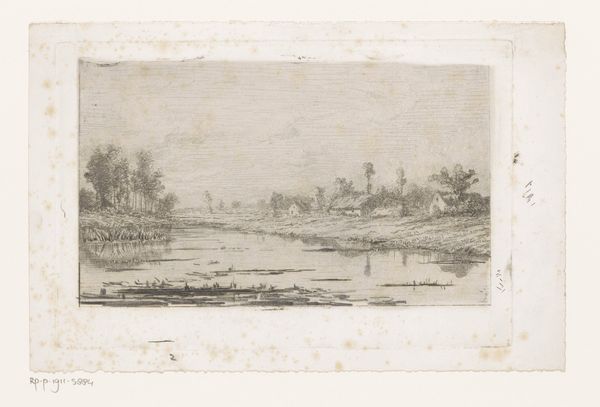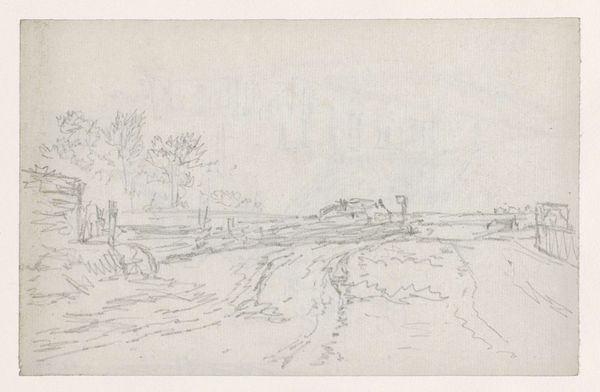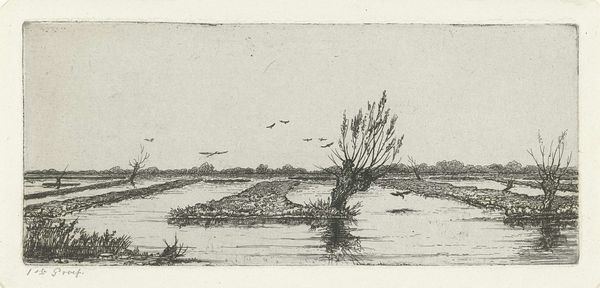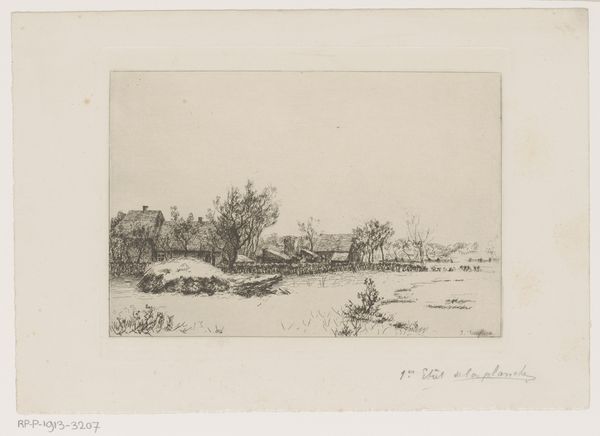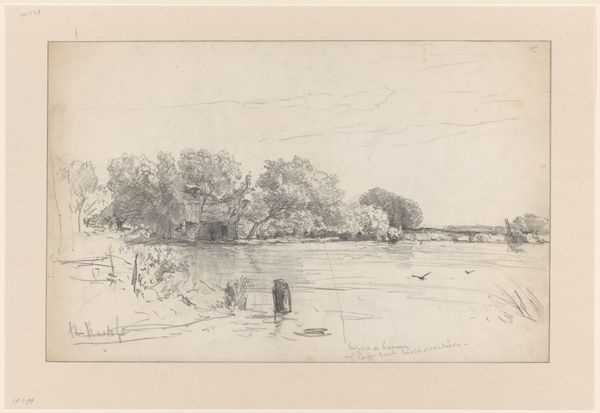
print, etching, engraving
#
lake
#
dutch-golden-age
# print
#
pen sketch
#
etching
#
pencil sketch
#
old engraving style
#
landscape
#
line
#
cityscape
#
engraving
#
realism
Dimensions: height 200 mm, width 314 mm
Copyright: Rijks Museum: Open Domain
Curator: Looking at this artwork, I'm struck by the immediacy of its atmosphere, a delicate balance between clarity and mist. It’s an etching by Maurits van der Valk, titled “Meer met zeilboten,” placing it somewhere between 1867 and 1935. Editor: The etching is incredibly fine, giving a silvery feel to the whole scene. The boats, though small, suggest a tranquil but active harbor or lakefront community. What context might inform such imagery at that time? Curator: Well, printmaking had long been established as a popular medium by the early 20th century and, like photography, presented broader accessibility for both artists and collectors to distribute and own artworks depicting the social landscape. The delicate lines mirror an increased focus on portraying a realistic but beautiful view of the dutch waterways, focusing on the interplay of community and nature. Editor: You mention the delicate lines – note the skillful use of hatching and cross-hatching to create tonal variation and depth, turning simple line work into textured reflections on the water. The horizon line is quite low, really opening up the composition. Curator: Exactly, that spaciousness reflects the evolving national pride connected to maritime activities at the time, and the push to depict the dutch countryside as both productive and serene in opposition to rapidly growing urban landscapes. Thinkers then certainly debated industrial progress's effect on Dutch identity. Editor: The details do pull you in. I see a small bridge connecting part of the town, partially hidden, which gives an almost cinematic depth of field to the composition. What looks like a thatched building sits comfortably in the mid-ground. Curator: Van der Valk captured everyday life and made it accessible and saleable for a growing dutch middle class, really responding to the cultural democratization of art in the early 20th century. He certainly echoed sentiments of his time. Editor: Looking at it again, the restrained tonal palette heightens its appeal. It feels authentic and offers more than just pretty boats on still water. Curator: True, beyond pure aesthetics, it tells of its moment: changing Dutch attitudes towards environment, labor, and the market of art itself. Editor: Thanks to your analysis, what seemed a placid vista reveals itself as a culturally rich visual document. Curator: Indeed, and its quietness really echoes how printmakers were both shaping and responding to broad social tides.
Comments
No comments
Be the first to comment and join the conversation on the ultimate creative platform.



